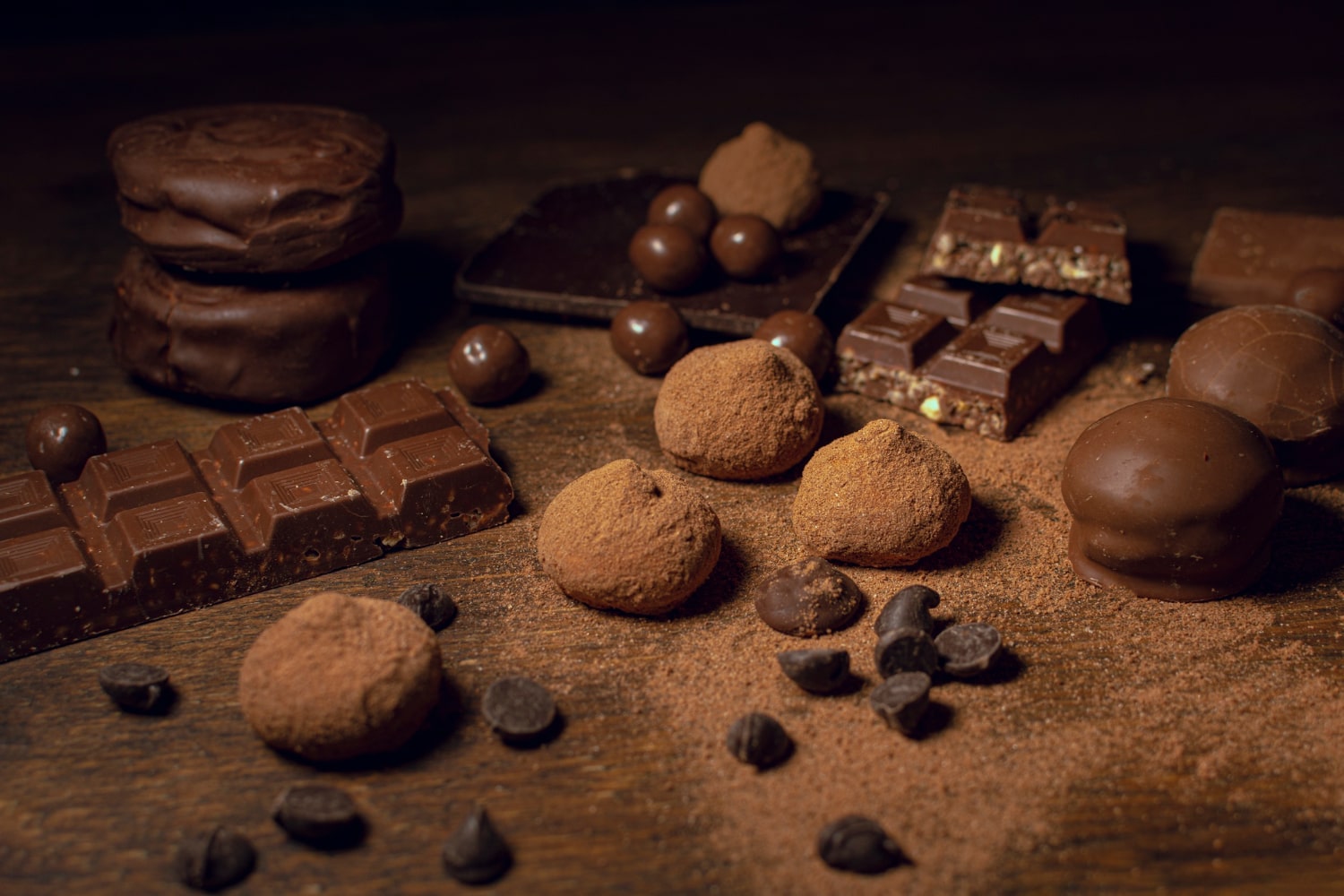Chocolate is not just a sweet treat but a true culinary legend with a history that spans thousands of years. Its taste can lift your mood, evoke pleasant memories, and accompany us during celebrations and everyday life alike. Every year, chocolate takes on new forms, flavors, and methods of consumption, but it remains a favorite around the world. Behind a simple bar lies an entire science — from growing cacao trees to the chemistry of pleasure. This article presents the most interesting and lesser-known facts about chocolate that you may not have known.
- The history of chocolate dates back thousands of years to the civilizations of the Maya and Aztecs. They consumed cacao as a bitter drink mixed with pepper and spices. This drink was considered sacred and used in rituals and ceremonies.
- In ancient Aztec culture, cacao beans were used as currency. A few beans could buy a chicken or an avocado. This demonstrates the high economic and cultural value of cacao at the time.
- The first solid chocolate appeared in Europe only in the 19th century. Before that, chocolate was consumed mainly as a hot beverage with added sugar and vanilla. Only with technological advancements did chocolate bars as we know them become possible.
- Chocolate stimulates the production of endorphins, the so-called happiness hormones. This explains why eating chocolate often improves mood. The effect has been confirmed by many studies in the field of neuroscience.
- Chocolate contains theobromine, a compound similar to caffeine but with milder effects. It stimulates the nervous system, improves focus, and provides energy. However, theobromine is toxic to dogs and cats.
- The most expensive chocolate in the world is handmade from select cacao beans. Some bars are coated with edible gold and contain rare ingredients such as truffles or saffron. One gram of such chocolate can cost more than a gram of silver.
- Dark chocolate contains a high level of antioxidants that protect cells from damage. These compounds may reduce the risk of cardiovascular diseases. Moderate consumption of quality dark chocolate is considered beneficial for health.
- Chocolate melts at body temperature, which creates a pleasant sensation as it dissolves in the mouth. This is one of the reasons why it delivers such a strong sensory experience. The melting process also activates pleasure receptors in the brain.
- White chocolate is not technically considered real chocolate because it contains no cocoa powder. It is made from cocoa butter, sugar, and milk. Due to the absence of cacao solids, its taste and properties differ from dark chocolate.
- The largest chocolate bar in the world weighed over 5 tons. It was made in the United States and entered the Guinness World Records. Its production took several days and required tons of cocoa and sugar.
- In Belgium, Switzerland, and France, chocolate is not just a dessert but part of national culture. These countries have chocolate museums, festivals, and schools for master chocolatiers. Belgian pralines are still regarded as the gold standard of quality.
- During the Middle Ages, chocolate was banned in some European monasteries. It was considered too tempting and a distraction from spiritual devotion. Eventually, it was permitted as a source of energy during fasting.
- During World War II, chocolate was included in the ration packs of American soldiers. It was valued for its high calorie content, nutrition, and convenience in combat conditions. Special types of heat-resistant military chocolate were developed.
- There are hundreds of cacao bean varieties, but the most prized are Criollo, Trinitario, and Forastero. They differ in taste, aroma, and chemical composition. Producers of fine chocolate carefully select beans to craft a unique flavor profile.
- The world’s leading cacao producer is Côte d’Ivoire. This country accounts for more than one-third of global cacao exports. Programs to improve working conditions for farmers are actively being implemented there.
- Chocolate can come in many forms including solid, liquid, mousse, creamy, hot, filled, sugar-free, grainy, salty, and even spicy. The modern market offers hundreds of variations in flavor, color, and texture. This diversity allows everyone to find their favorite kind.
- Chocolate aromatherapy is a modern spa treatment. It involves the use of cocoa butter and chocolate body masks that relax and tone the skin. The scent of chocolate helps reduce stress and anxiety.
- In Mexico, chocolate still plays a key role in traditional cuisine and is used not only in desserts but also in savory dishes. Mole sauce, made from cacao and chili, is a popular accompaniment to meat. This recipe dates back to precolonial times.
- Cacao trees grow only in equatorial climates where temperatures never fall below 15 degrees Celsius. They require moisture, warmth, and the shade of taller trees. A single cacao tree produces only about one kilogram of finished chocolate per year.
- Moderate chocolate consumption can improve cognitive function. Studies have shown that flavonoids found in cacao positively affect memory and processing speed. The effect is especially noticeable in older adults.
These fascinating facts about chocolate show that it is more than just a delicious treat. Chocolate is a cultural, historical, and scientific phenomenon that has accompanied humanity through celebrations, journeys, wars, and everyday life. It unites people in their love for flavor, aroma, and joy. Learning these incredible facts helps us appreciate the simple pleasures in life even more.





